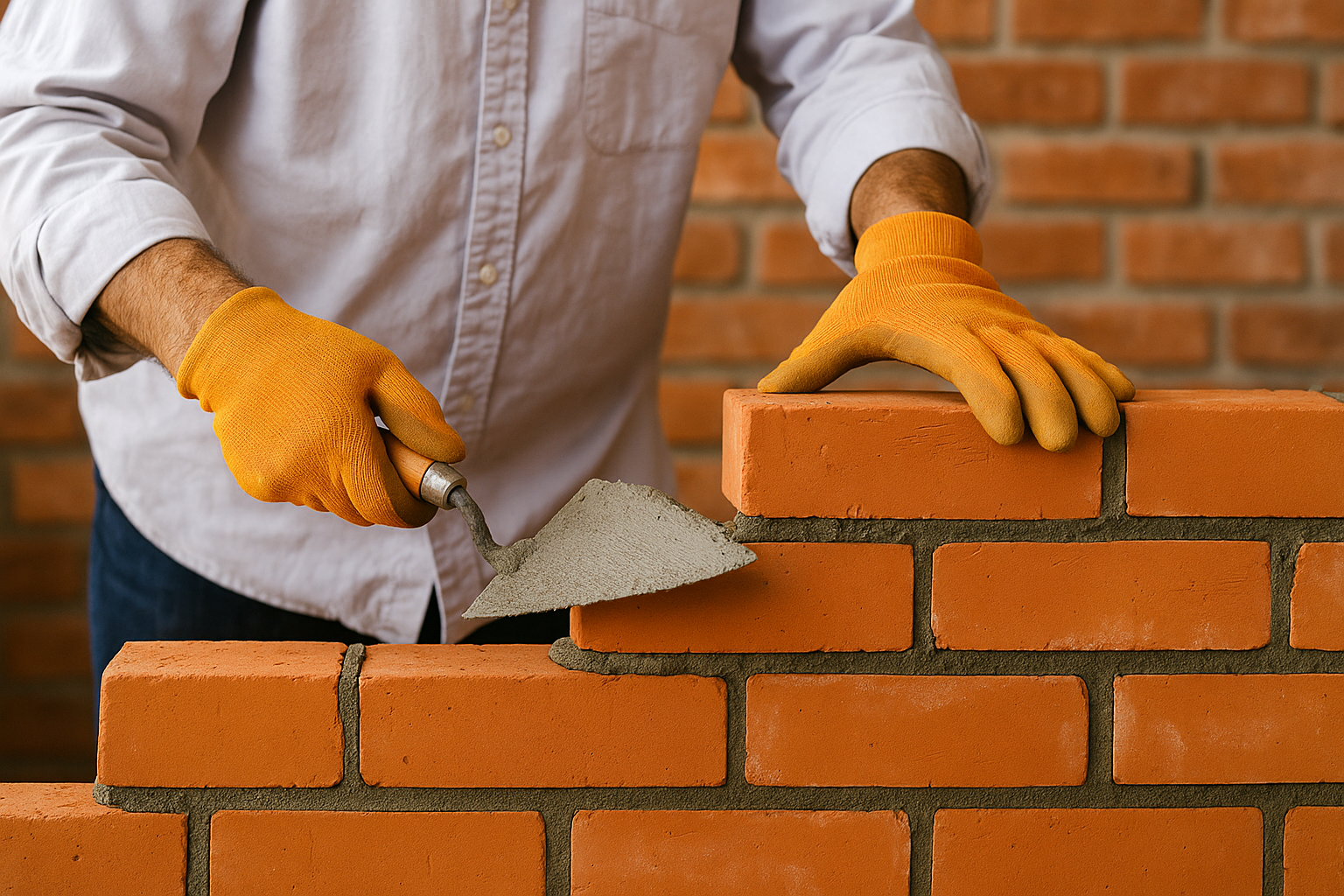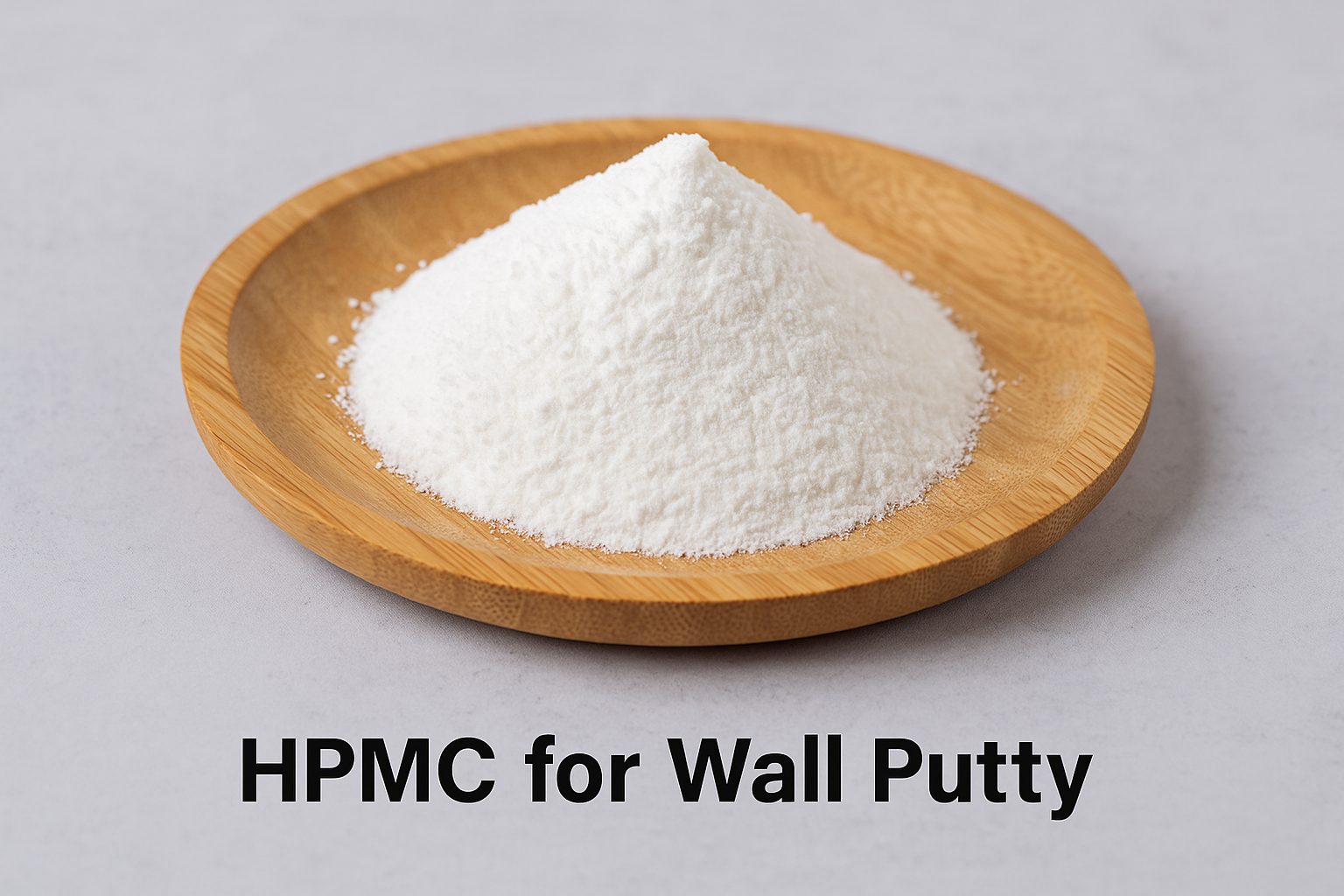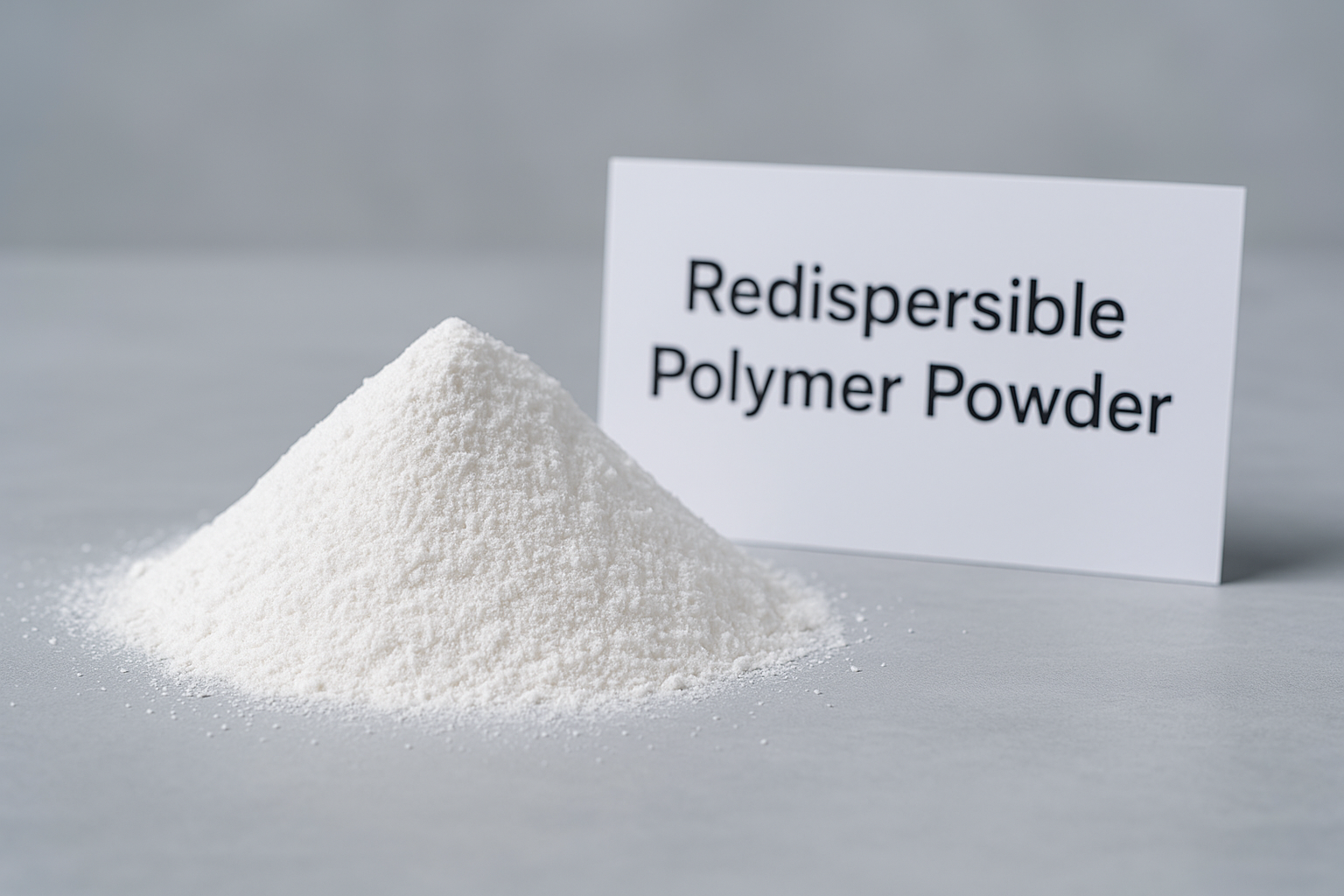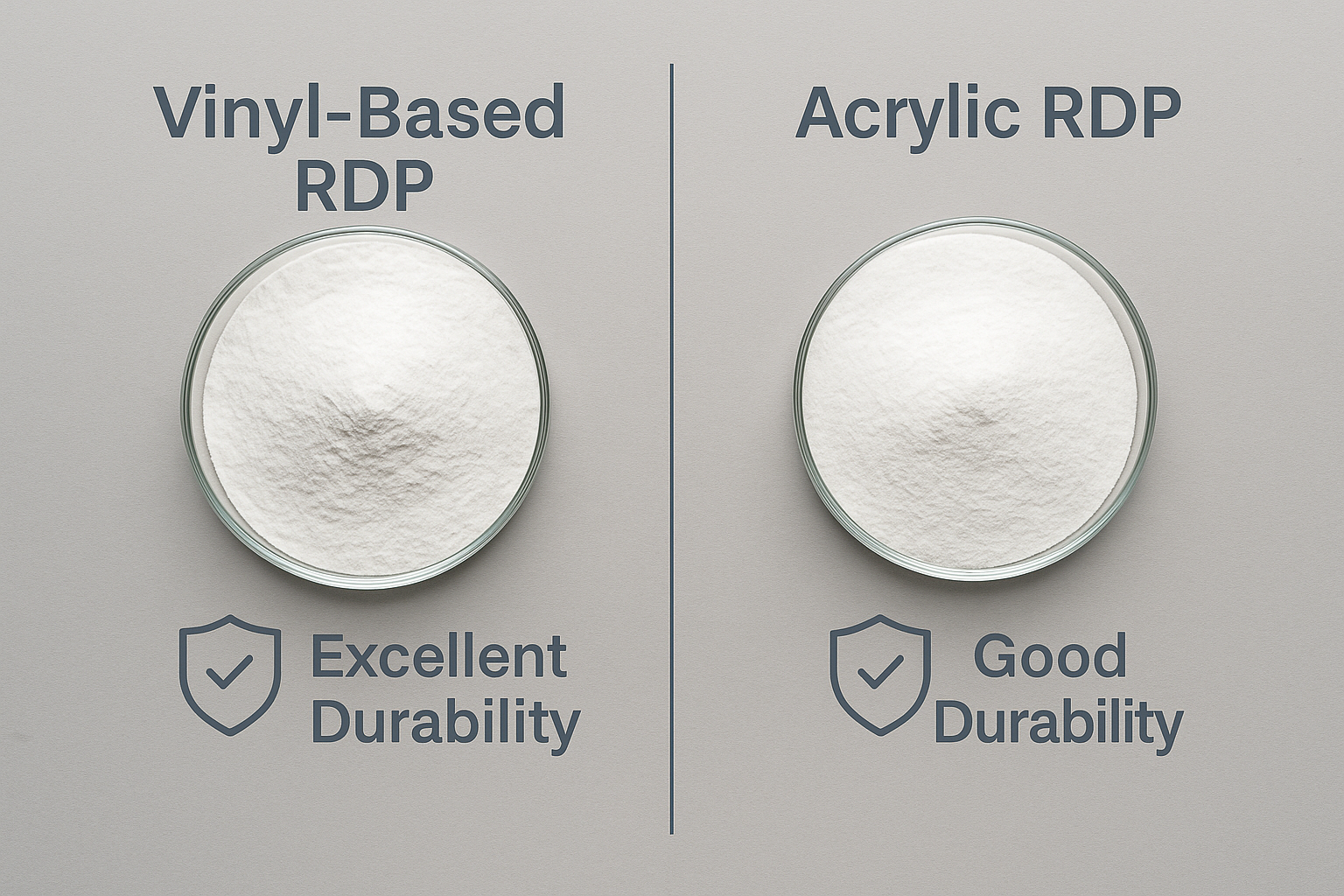Concrete cracks easily under tension. This common problem plagues construction projects worldwide, leading to structural failures and costly repairs. Finding a solution has been an ongoing challenge for engineers and builders alike.
Fiber Reinforced Concrete (FRC)1 is a specialized concrete containing fibrous materials that increase its structural strength and reduce cracking. By dispersing fibers throughout the concrete matrix, FRC enhances tensile strength, ductility, and crack resistance while maintaining workability.

I've been in the construction materials2 industry for over 15 years, and I've seen firsthand how fiber reinforcement has revolutionized concrete applications. Today, I'll share my knowledge about the different types of fiber reinforced concrete, their properties, and how to choose the right one for your project.
What is Fiber Reinforced Concrete and How Does it Work?
Have you ever seen concrete cracking and wondered if there's a better solution? Standard concrete has poor tensile strength and tends to develop cracks under stress, reducing durability and compromising structural integrity.
Fiber reinforced concrete (FRC) is a composite material consisting of conventional concrete with added fibers that are uniformly distributed and randomly oriented. These fibers act as crack arrestors, limiting crack width and propagation while enhancing tensile strength, flexural capacity, and impact resistance.

Fiber reinforcement works by bridging cracks that form in the concrete matrix. When I first started working with FRC, I was amazed at how these tiny fibers could make such a big difference in concrete performance. The fibers transfer stress across cracks, allowing the composite to continue carrying loads even after the concrete matrix has cracked.
The reinforcing mechanism depends on several factors including the fiber type3, geometry, volume fraction, distribution, and bond characteristics with the cement matrix. For instance, short fibers help control micro-cracks, while longer fibers are more effective against macro-cracks.
Historical Development of FRC
| Era | Development | Significance |
|---|---|---|
| Ancient Times | Straw and horse hair in mud bricks | Early concept of fiber reinforcement |
| 1960s | Modern FRC development begins | Scientific research into steel fibers |
| 1970s | Synthetic fibers introduced | Expanded application possibilities |
| 1990s-Present | Advanced engineered fibers | Specialized applications and high performance |
The evolution of FRC technology has enabled construction professionals to address specific project requirements with tailored fiber solutions, making concrete more versatile than ever before.
What Types of Fibers Are Used in Fiber Reinforced Concrete?
When starting a concrete project, choosing the right fiber type can be overwhelming. With so many options available, how do you know which will provide the best performance for your specific application?
There are five main categories of fibers used in concrete: steel fibers, synthetic fibers (including polypropylene, nylon, and polyester), mineral fibers (like glass and asbestos), carbon fibers, and natural fibers (such as cellulose and sisal). Each type offers distinct properties and benefits for different applications.

I remember visiting a construction site in Dubai where they were using steel fibers for a high-traffic industrial floor. The project engineer explained that they chose steel fibers specifically for their high tensile strength and ability to improve impact resistance. This was critical for the heavy machinery that would operate on the floor daily.
The selection of fiber type depends on the specific requirements of your project. Let me break down each type in more detail:
Steel Fibers
Steel fibers are among the most commonly used fibers in concrete. They typically have lengths between 0.25 and 2.5 inches (6-60mm) and diameters of 0.02 to 0.04 inches (0.5-1.0mm). Their main advantages include high tensile strength, excellent bond with concrete, and superior crack control.
I've observed steel fibers performing exceptionally well in:
- Industrial floors
- Pavements and roads
- Tunnel linings
- Blast-resistant structures
However, they can be susceptible to corrosion when exposed to certain environments, which is an important consideration for long-term durability.
Synthetic Fibers
Synthetic fibers include polypropylene, nylon, polyester, and polyethylene varieties. These fibers are particularly valued for their chemical stability and resistance to alkaline environments.
| Synthetic Fiber Type | Key Properties | Best Applications |
|---|---|---|
| Polypropylene | Excellent chemical resistance, low cost | Shotcrete, precast elements |
| Nylon | High tenacity, good recovery from deformation | Decorative concrete, overlays |
| Polyester | Good tensile strength, economical | General concrete applications |
| Polyethylene | High modulus varieties available | High-performance applications |
Mineral Fibers
Glass fibers and asbestos (though no longer used due to health concerns) fall into this category. Alkali-resistant glass fibers (AR-glass) are designed specifically to resist the alkaline environment of concrete.
Carbon Fibers
These high-performance fibers provide exceptional strength and modulus while being very lightweight. Though expensive, they offer electrical conductivity and electromagnetic shielding properties that make them valuable for specialized applications.
Natural Fibers
Derived from plants, natural fibers like sisal, jute, and cellulose provide an environmentally friendly option. I've seen them used effectively in non-structural applications and in developing countries where they're readily available.
How Do Different Types of Fiber Reinforced Concrete Perform?
Have you wondered which type of fiber reinforced concrete would best suit your specific construction needs? The various FRC types each have unique performance characteristics that can significantly impact project outcomes and long-term durability.
Steel Fiber Reinforced Concrete (SFRC) offers high tensile and flexural strength, Synthetic Fiber Reinforced Concrete provides excellent crack control and durability, Glass Fiber Reinforced Concrete (GFRC) delivers high impact resistance with architectural versatility, while specialized types like Carbon and Natural FRC serve niche applications with specific performance benefits.

During my work with a major infrastructure project in the Middle East, I observed firstly how the performance requirements dictated fiber selection. For tunnel segments exposed to high pressures, we specified SFRC for its superior load-bearing capacity. For exterior architectural panels, GFRC was the clear choice due to its lightweight nature and formability.
The performance of different FRC types depends largely on the fiber properties and their interaction with the concrete matrix. Let's examine the key types:
Steel Fiber Reinforced Concrete (SFRC)
SFRC contains steel fibers that significantly enhance the concrete's mechanical properties. Typical dosages range from 0.5% to 2.0% by volume. The steel fibers come in various shapes including straight, hooked-end, crimped, and twisted to improve anchorage with the concrete matrix.
Performance characteristics include:
- Flexural strength increases of 50-100%
- Enhanced shear capacity
- Improved fatigue resistance
- Superior crack control under load
- High impact resistance
These properties make SFRC ideal for industrial floors, bridge decks, and tunnel linings where structural performance is critical.
Synthetic Fiber Reinforced Concrete
This category includes various types based on the synthetic fiber used:
-
Polypropylene Fiber Reinforced Concrete (PFRC): Most common synthetic FRC, with excellent plastic shrinkage crack control. Typically used at lower dosages (0.1-0.3%) for shrinkage control and at higher dosages (0.5-1.5%) for structural enhancement.
-
Nylon Fiber Reinforced Concrete: Offers better bond characteristics than polypropylene while maintaining good chemical resistance.
-
Polyester Fiber Reinforced Concrete: Provides a balance of performance and economy.
When I visited a residential development project in Singapore, the contractor was using PFRC for all basement slabs specifically to control plastic shrinkage cracking in the hot, humid climate – a perfect application for this type of FRC.
Glass Fiber Reinforced Concrete (GFRC)
GFRC contains alkali-resistant glass fibers that provide:
- High impact strength
- Excellent tensile strength
- Reduced weight (typically 1/3 to 1/4 the weight of conventional concrete)
- Superior molding capability for complex shapes
GFRC is commonly used for architectural facades, cladding panels, and decorative elements where lightweight, detail-rich elements are needed.
What Are the Key Properties of Fiber Reinforced Concrete?
Are you trying to determine if fiber reinforced concrete is the right choice for your project? Understanding its fundamental properties is essential for making informed decisions about materials and construction methods.
Fiber reinforced concrete exhibits enhanced tensile strength (typically 5-40% higher than plain concrete), superior crack resistance, improved ductility, greater impact resistance (up to 10 times higher), and better fatigue performance. These properties vary based on fiber type, dosage, geometry, and distribution within the concrete matrix.

I once supervised a bridge rehabilitation project where we needed concrete with exceptional durability under dynamic loading. We chose steel fiber reinforced concrete specifically for its fatigue resistance. Ten years later, the bridge shows minimal wear despite heavy traffic loads – a testament to FRC's enhanced properties.
The properties of fiber reinforced concrete distinguish it from conventional concrete in several important ways. These properties directly influence its performance in different applications:
Mechanical Properties
Tensile Strength and Behavior
Unlike plain concrete which fails suddenly once cracking occurs, FRC continues to carry load after first crack. This post-crack performance (often called "residual strength") is perhaps the most valuable property of FRC.
| Fiber Type | Typical Tensile Strength Increase | Post-Crack Behavior |
|---|---|---|
| Steel | 25-100% | Excellent residual strength |
| Synthetic (macro) | 15-40% | Good residual strength |
| Glass | 20-50% | Moderate residual strength |
| Micro-synthetic | 5-15% | Limited residual strength |
Flexural Performance
FRC typically shows significant improvements in flexural strength (modulus of rupture) and toughness (energy absorption capacity). This is particularly important for pavements, industrial floors, and other horizontally cast elements.
Impact Resistance
One of the most dramatic improvements offered by FRC is in impact resistance. Depending on the fiber type3 and dosage, impact resistance can increase by 500-1000%. I've seen this property save clients significant maintenance costs in industrial facilities where equipment drops and impacts are common.
Durability Properties
Crack Control
Fibers limit both the width and propagation of cracks. This occurs at two levels:
- Micro-fibers control plastic shrinkage cracks during the concrete's early life
- Macro-fibers bridge larger cracks that develop under load or environmental stresses
Freeze-Thaw Resistance
By controlling cracking, fibers improve concrete's resistance to freeze-thaw damage. This has made FRC increasingly popular in cold-weather infrastructure applications like bridge decks and highway pavements.
Permeability and Corrosion Resistance
The crack control provided by fibers reduces permeability, which in turn enhances corrosion protection for embedded reinforcement and improves overall durability.
What Are the Benefits of Using Fiber Reinforced Concrete?
Do you find yourself facing challenges with concrete durability, construction efficiency, or structural performance? Traditional solutions often fall short, leading to increased maintenance costs, project delays, and compromised safety.
Using fiber reinforced concrete offers multiple benefits including reduced construction time by eliminating or reducing conventional reinforcement, lower maintenance costs through enhanced durability, improved structural resilience with better crack control, and greater design flexibility allowing more complex shapes and thinner sections.
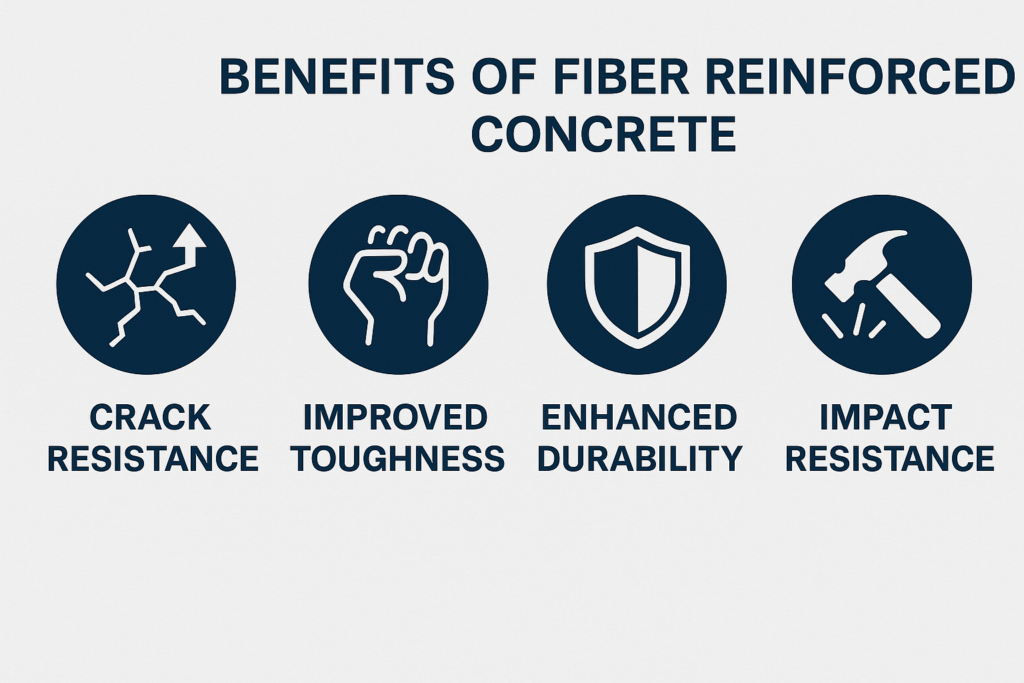
I recall a warehouse project where switching to steel fiber reinforced concrete eliminated the need for wire mesh in the floor slab. This change accelerated the construction schedule by two weeks and reduced labor costs by approximately 15%. The client was particularly satisfied with the crack-free surface after five years of heavy forklift traffic.
The advantages of using FRC extend beyond just improved mechanical properties. Let's explore the multifaceted benefits that make it increasingly popular in modern construction:
Construction Benefits
Reduced Construction Time4
By eliminating or reducing the need for traditional reinforcement (like rebar or wire mesh), FRC can substantially accelerate construction schedules. This is especially true for:
- Slab-on-grade applications
- Shotcrete applications in tunneling
- Precast elements
The time savings come from eliminating reinforcement placement, inspection, and related activities that typically create bottlenecks in the construction process.
Cost Effectiveness
While fiber itself represents an additional material cost, the total project economics often favor FRC due to:
- Reduced labor requirements
- Faster construction (reducing overhead costs)
- Thinner sections in many applications
- Extended service life and reduced maintenance
Simplified Construction Process
Working with FRC simplifies site operations by:
- Eliminating rebar placement and inspection
- Reducing or eliminating control joints in many applications
- Allowing for more efficient placing and finishing methods
Performance Benefits
Enhanced Durability
FRC structures typically demonstrate superior long-term performance with:
- Reduced cracking
- Higher resistance to impact and abrasion
- Better performance under cyclic loading
- Greater resistance to moisture penetration
Improved Safety Performance
Certain FRC types offer enhanced fire resistance (particularly with some synthetic fibers) and better blast resistance (especially with steel fibers). These properties make FRC valuable for critical infrastructure and safety-sensitive applications.
Structural Redundancy
The distributed reinforcement provided by fibers creates multiple load paths, improving structural resilience. This is particularly valuable in:
- Seismic applications
- Blast-resistant structures
- Infrastructure with variable loading conditions
Sustainability Benefits
Material Efficiency
FRC often allows for:
- Thinner concrete sections
- Extended service life
- Reduced cement content in some applications
- Use of recycled materials (some fiber types)
Reduced Carbon Footprint
The sustainability benefits of FRC can include:
- Less embodied carbon through reduced material usage
- Longer service life, reducing life-cycle impacts
- Lower transportation impacts due to lighter elements (especially with GFRC)
What Factors Affect the Performance of Fiber Reinforced Concrete5?
Are you concerned about achieving consistent results with fiber reinforced concrete? Many projects fail to realize the full potential of FRC because critical influencing factors are overlooked during design, mixing, or placement.
The performance of fiber reinforced concrete is primarily affected by fiber type and dosage, fiber geometry and aspect ratio, mixing and placing methods, concrete matrix composition, and curing conditions. Proper attention to these factors ensures optimal mechanical properties and durability.
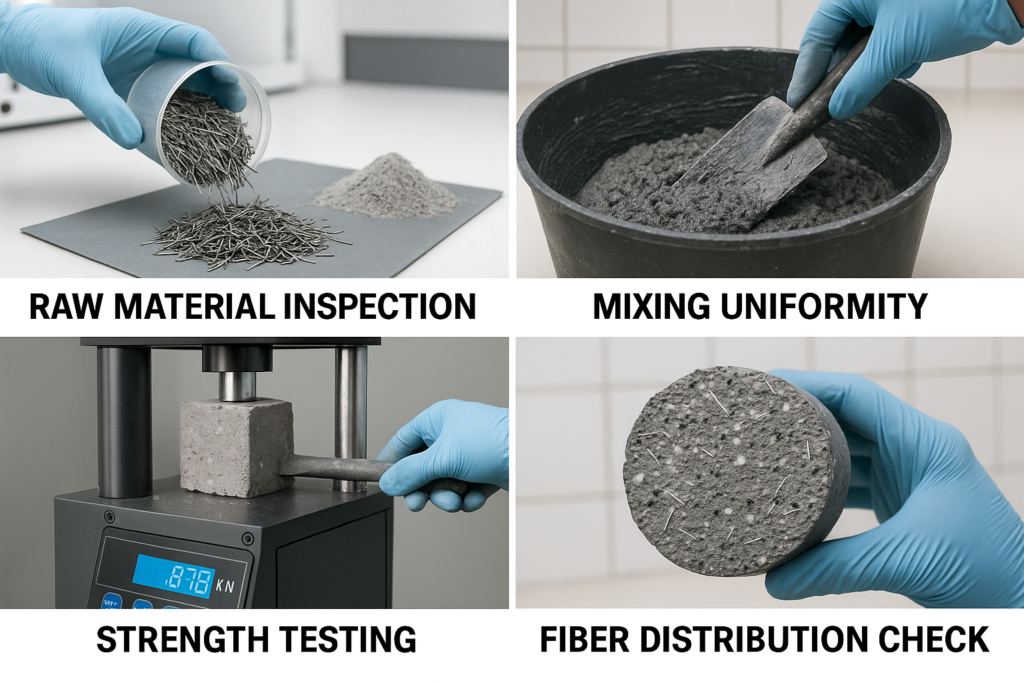
During a large industrial flooring project in India, our team discovered that the local aggregate properties significantly affected fiber distribution. We had to adjust the mix design and increase the fiber dosage by 15% to achieve the specified performance. This experience taught me that FRC performance is highly dependent on local materials and conditions.
Understanding the factors that influence FRC performance is essential for successful implementation. Let's examine these factors in detail:
Fiber-Related Factors
Fiber Type Selection
The fiber material fundamentally determines many performance characteristics:
| Fiber Type | Key Performance Influence |
|---|---|
| Steel | High strength, stiffness, and toughness |
| Synthetic | Crack control, durability and chemical resistance |
| Glass | Tensile strength and aesthetics |
| Carbon | Strength, stiffness and electrical properties |
| Natural | Sustainability and cost-effectiveness |
Selecting the appropriate fiber type should be based on the specific performance requirements of your project.
Fiber Dosage
The amount of fiber used (typically measured in kg/m³ or percent by volume) directly influences performance. There are critical thresholds to consider:
- Below certain minimums, fibers provide minimal structural benefit
- Optimal dosages create the desired performance enhancement
- Excessive dosages can compromise workability and consolidation
Finding the right balance requires understanding both the performance requirements and the practical constraints of mixing and placement.
Fiber Geometry
The geometric properties of fibers significantly affect their performance:
- Length: Longer fibers typically provide better crack-bridging but may reduce workability
- Diameter/thickness: Affects the number of fibers per unit weight
- Aspect ratio (length-to-diameter): Higher ratios generally improve performance but may reduce workability
- Surface texture/shape: Affects bond with the concrete matrix
From my experience, deformed fibers (hooked-end, crimped, etc.) generally outperform straight fibers in terms of pullout resistance, but they can be more challenging to mix uniformly.
Mix Design Factors
Matrix Composition
The concrete mix design significantly influences how fibers perform:
- Aggregate size and gradation: Larger aggregates may interfere with fiber distribution
- Cement content and type: Affects bond strength between fibers and matrix
- Water-cement ratio: Impacts both strength and workability
- Supplementary cementitious materials: Can improve workability with high fiber dosages
I've found that higher fiber contents often require adjustments to the mix design, including:
- Increased fine aggregate content
- Higher paste volume
- Use of superplasticizers
- Smaller maximum aggregate size
Workability Considerations
Fibers typically reduce concrete workability, requiring careful mix design and sometimes special admixtures. When working on a high-rise project in Singapore, we incorporated high-range water reducers specifically to maintain workability with a 1% steel fiber dosage.
Process-Related Factors
Mixing Procedures
Proper dispersion of fibers is critical for performance. Factors affecting dispersion include:
- Mixing sequence (when fibers are added)
- Mixing time and energy
- Equipment type and condition
- Batch size
Poor mixing can result in fiber balling or clumping, which significantly reduces performance and may create weak spots in the structure.
Placement Methods
The placement technique must be appropriate for the fiber type and dosage:
- Conventional placement methods may work for low fiber dosages
- Higher dosages might require specialized equipment
- Pumping requires attention to pump type, line diameter, and pressure
- Vibration techniques affect fiber orientation
Curing Conditions
Proper curing becomes even more important with FRC:
- Early-age cracking risk may be higher due to restrained shrinkage
- Bond development between fibers and matrix depends on proper hydration
- Temperature effects can be more pronounced with certain fiber types
Who Should Choose Wanhong as Their Fiber Supplier?
Are you struggling with inconsistent fiber quality or unreliable supply chains? These issues can derail construction schedules and compromise structural performance, leaving you with costly repairs and unhappy clients.
Companies seeking high-quality polypropylene fibers with consistent performance, customizable specifications, reliable supply chains, and excellent technical support should choose Wanhong as their supplier. Our six production lines ensure consistent supply capacity while our quality control processes guarantee stable fiber performance.

I personally oversee our quality control process at Wanhong, and this attention to detail has helped us build lasting relationships with major construction companies across developing markets. One of our clients in Saudi Arabia has exclusively used our fibers for their industrial flooring projects for over five years, citing our consistent quality and technical support as key factors in their loyalty.
Selecting the right fiber supplier is crucial for project success. Here's why Wanhong stands out as a premier choice:
Product Quality and Consistency
Manufacturing Excellence
With six dedicated production lines, we maintain strict quality control throughout the manufacturing process:
- Raw material testing and certification
- Automated production monitoring
- Batch testing for mechanical properties
- Quality assurance documentation
Product Range
Our comprehensive product range meets diverse project requirements:
- Micro-synthetic fibers for plastic shrinkage control
- Macro-synthetic fibers for structural applications
- Specialized fibers for high-temperature applications
- Custom fiber lengths and properties for specific applications
Performance Guarantees
We back our products with:
- Third-party testing certifications
- Project-specific performance warranties
- Documented quality control processes
- Consistency from batch to batch
Supply Chain Reliability
Global Distribution Network
Our strategic location in China combined with established logistics partners enables:
- Fast shipping to developing markets
- Bulk order capability for large projects
- Flexible delivery scheduling
- Customs assistance and documentation
Inventory Management
We maintain substantial inventory levels to:
- Accommodate emergency orders
- Support just-in-time delivery requirements
- Ensure supply during peak construction seasons
- Minimize project delays
Technical Support and Service
Expert Consultation
Our team includes construction materials specialists who provide:
- Mix design recommendations
- Dosage optimization
- Application-specific guidance
- Troubleshooting support
Testing and Documentation
We offer comprehensive support documentation:
- Material test reports
- Application case studies
- Compatibility testing with local materials
- Performance comparison data
On-Site Support
For major projects, we provide:
- Field representatives during critical phases
- Placement and finishing guidance
- Quality control assistance
- Performance verification
Customer-Centric Approach
Customization Options
We work directly with clients to develop:
- Custom fiber formulations for specific applications
- Specialized packaging for different project types
- Branded packaging for distributors
- Application-specific fiber blends
Competitive Pricing
Our efficient production processes allow us to offer:
- Volume-based pricing incentives
- Consistent pricing policies
- Transparent quotation process
- Value-added services without premium pricing
Conclusion
Fiber reinforced concrete transforms ordinary concrete into a versatile, durable material by enhancing strength, controlling cracks, and improving long-term performance. By selecting the right fiber type and supplier, you can dramatically improve your construction outcomes and reduce lifecycle costs.
-
Explore the transformative benefits of FRC in construction, enhancing strength and reducing cracking. ↩
-
Stay updated on the latest innovations in construction materials, including FRC. ↩
-
Learn about various fiber types and their unique benefits for concrete applications. ↩ ↩
-
Explore innovative methods to cut down construction time and boost productivity. ↩
-
Explore the benefits of FRC to enhance your construction projects with improved durability and efficiency. ↩



